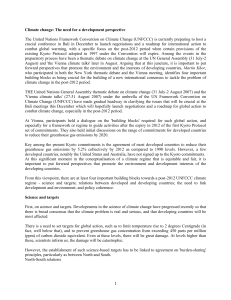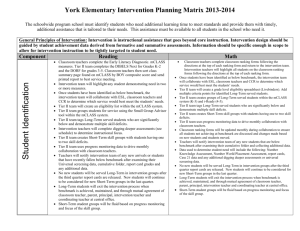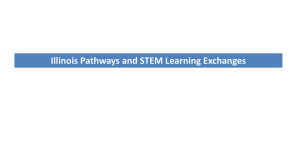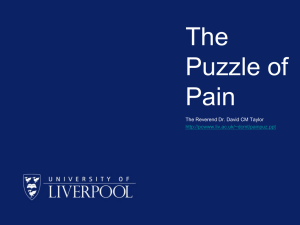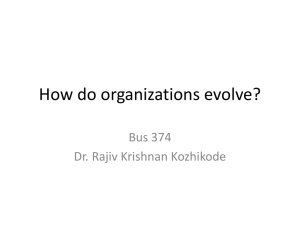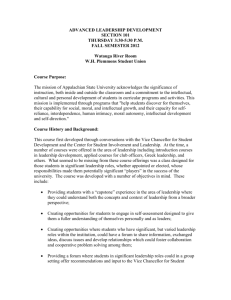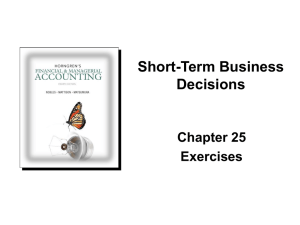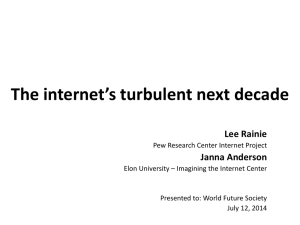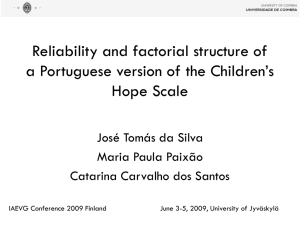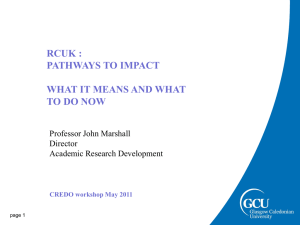Laurence Tubiana
advertisement
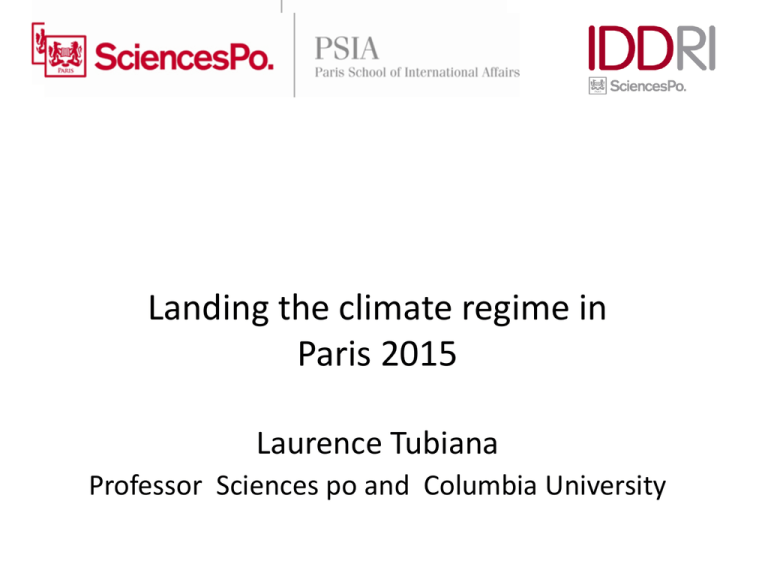
Landing the climate regime in Paris 2015 Laurence Tubiana Professor Sciences po and Columbia University What is at stake in Paris in 2015 • It is simple : • It is about changing economic and political signals in favor of the low carbon economy • It is about the alignment of expectations of: – Governments – Local authorities – Businesses – Consumers and citizens How we do that? • This is not simple ! required : something like a sheepdog or a magic flute The notion of a centralized emission of the signal have disappeared together with time tables and targets model including a global carbon price Two pillars of the Paris compact • The agreement between governments within UNFCC mandate : the sheep dog • The actions of all supporting the UNFCCC agreement : the flute player • And a cross-cutting innovation and R and D agenda Two pillars of the Paris compact • UNFCCC agreement : the sheepdog method • Legal agreement on processes : the remaining top down elements • Push and pull : national contributions as the center piece Mitigation contributions A fundamental shift from a ‘logic of targets’ to a ‘logic of pathways’. Under a ‘logic of pathways’, countries would submit long-term, indicative low emissions pathways, combined with operational multisector, multi-timeframe target packages. Four levels of uncertainties making comitments difficult Level 1: uncertainty about the level and structure of future economic activity Level 2 : uncertainty of actions of others Level 3: uncertainty on the reality of action: understanding the ‘signal’ of serious decarbonisation effort amid short-term uncertainty and inertia Level 4: capacity to deliver depending on costs, government capacity, availability of technologies Mitigation structure • Combining the short-term and the long-term perspective through a combination of short-term targets and aspirational long-term pathways. • Align domestic policy processes and international negotiations through collective, predictable expectations about future negotiation cycles. • Reflect the inertia of infrastructure by updating nearterm targets by setting new targets for the next period. For example, in 2020 it would make very little sense to adjust a 2025 target. Rather, new ambition and reduction opportunities should be expressed by more ambitious 2030 and 2035 targets. Reducing uncertainties A Global goal : why and how keep 2° • 2°C target : a directional reference to assess progress at the global level and national contributions. • a risk management approach recognizing the imperative to avoid risks of higher concentration, delayed action scenarios: • It should include more operational directional references than the current framing under the Cancun Agreements, • key quantified conclusions of the IPCC regarding the global 2˚C trajectory as a directional reference point. • iterations of nationally determined contributions should be taken in the context of the 2˚C target. • An on-going process of reinforced action to address the gap. Ex sectoral policy efforts, • Mainly R and D… Updated contributions The approach for a dynamic agreement should address three challenges: • Combining the short-term and the long-term perspective through a combination of short-term targets and aspirational long-term pathways. • Align domestic policy processes and international negotiations through collective, predictable expectations about future negotiation cycles. • Reflect the inertia of infrastructure by updating near-term targets by setting new targets for the next period. For example, in 2020 it would make very little sense to adjust a 2025 target. Rather, new ambition and reduction opportunities should be expressed by more ambitious 2030 and 2035 targets. • rolling, multi-period target framework combined with a long-term low emissions pathway, i.e. an indicative long-term low emissions development strategy. • 2025/2030 …2050 • A combination of Targets and Pathways Rolling targets Three tier approach • Tier one: absolute, economy-wide targets relative to a predefined base-year/period, including both absolute reduction or absolute growth targets (e.g. for emerging countries), or aspirational peaking targets; • Tier two: relative, economy-wide targets against GDP (carbon intensity) or population (per capita) or against ex ante defined BAU; • Tier three: quantitative or qualitative sectoral indicators, targets or policies organized around the major emitting sectors. The second pillar : actions in support of UNFCCC agreement • • • • • • • The flute player : Cities, subnationals authorities Businesse acting in local or global value chains Financial institutions : National development banks Multilaterals development banks Pension and Soverereign funds How to organize ? • Working on the time horizon • Risk disclosure • Long term visions Its complex stupid! A role for economists • • • • • • Work on this new reality : Imperfect markets No carbon price silver bullet solution Inertia and lock in Innovation Co-benefits …. GOOD LUCK FOR ALL OF US !
